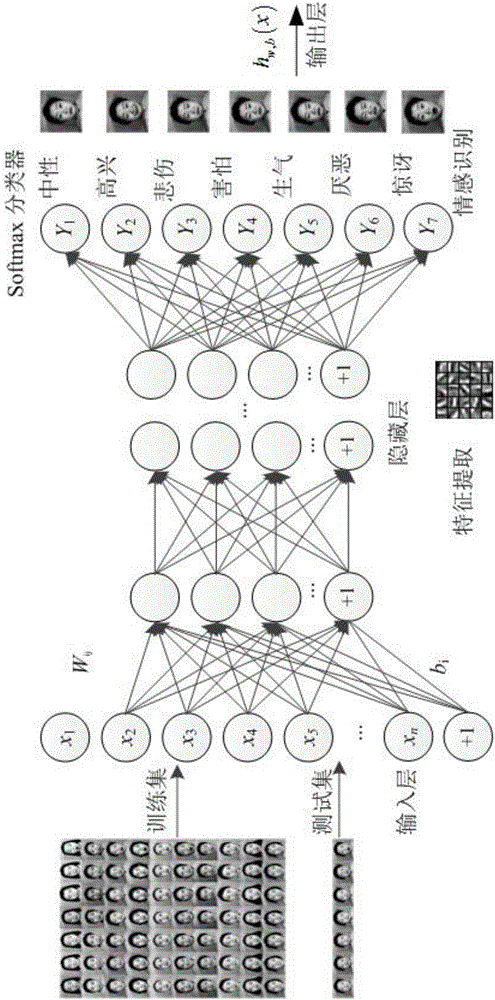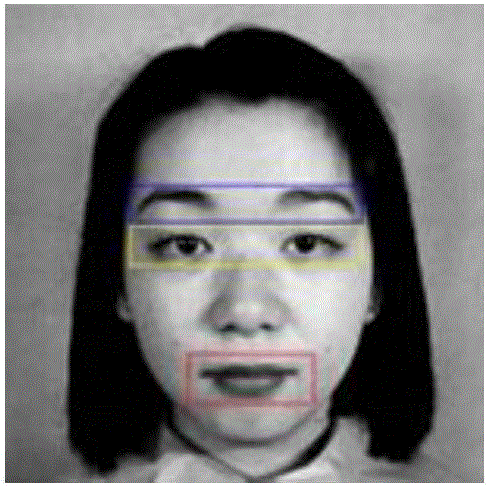Facial emotion recognition method based on depth sparse self-encoding network
A sparse self-encoding, facial emotion technology, applied in neural learning methods, character and pattern recognition, biological neural network models, etc., can solve the problems of local optimal gradient, dispersion, etc. Effects of Local Extremum and Gradient Diffusion Problems
- Summary
- Abstract
- Description
- Claims
- Application Information
AI Technical Summary
Problems solved by technology
Method used
Image
Examples
Embodiment Construction
[0042] The present invention will be further described below in conjunction with drawings and embodiments.
[0043] The present invention provides a face emotion recognition method based on deep sparse self-encoding network, referring to figure 1, by constructing a deep sparse autoencoder network to learn facial expression features and using a Softmax classifier to perform emotion recognition on expressions. First, use the restricted Boltzmann machine to perform layer-by-layer greedy pre-training to obtain the initial weight matrix of the network, expand the model to generate the "encoding" network and "decoding" network, and then build a Softmax classifier on the top of the model and train it. The gradient descent method is used to find the optimal model parameters, and finally the entire network including the Softmax classifier is regarded as a model, and the backpropagation algorithm and the gradient descent method are used to fine-tune the network weights to achieve the gl...
PUM
 Login to View More
Login to View More Abstract
Description
Claims
Application Information
 Login to View More
Login to View More - R&D
- Intellectual Property
- Life Sciences
- Materials
- Tech Scout
- Unparalleled Data Quality
- Higher Quality Content
- 60% Fewer Hallucinations
Browse by: Latest US Patents, China's latest patents, Technical Efficacy Thesaurus, Application Domain, Technology Topic, Popular Technical Reports.
© 2025 PatSnap. All rights reserved.Legal|Privacy policy|Modern Slavery Act Transparency Statement|Sitemap|About US| Contact US: help@patsnap.com



